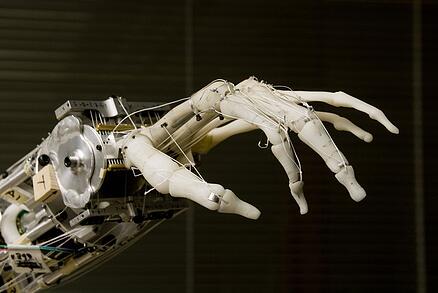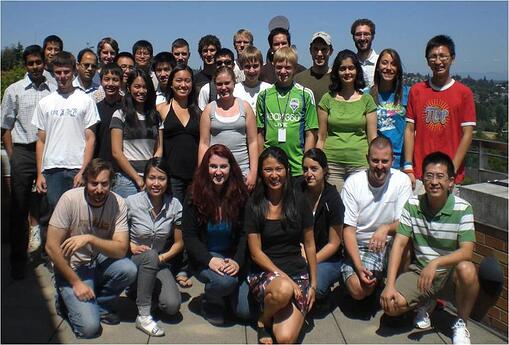The NSF has just announced funding for a new program to establish four Engineering Research Centers (ERCs) with over $70M in grants. One of the four universities chosen to participate in the program is the University of Washington, which will receive $18.5M over the next five years for its ERC for Sensorimotor Neural Engineering (ERC/SNE). Researchers will be designing and testing devices to restore or augment the body's capabilities for sensation and movement. UW's Neurobotics Lab will take a lead in the ERC/SNE, along with biologists and scientists focused on human health.

(A prosthetic hand, courtesy of UW Neurobotics Lab)
The Sensorimotor Neural Engineering ERC at UW-Seattle will work in conjunction with researchers at MIT and San Diego State University. The University of Washington in Seattle will be home to the Center, which will also collaborate with 23 partners in industry, including multinational corporations, healthcare practitioners, and start-up firms. This round of ERC funding and center establishment will be the third for the NSF.
The three other ERCs newly established by the NSF are:
The NSF ERC for Re-inventing America's Urban Water Infrastructure, led by Stanford University
The NSF-DOE ERC for Quantum Energy and Sustainable Solar Technologies (QESST), led by Arizona State University
The NSF-DOE ERC for Ultra-wide-area Resilient Electric Energy Transmission Networks (CURENT), led by the University of Tennessee, Knoxville
Heading the University of Washington's ERC/SNE Center, which opened this summer, is UW Computer Science & Engineering Professor Yoky Matsuoka, whose work in the Neurobotics Lab (members pictured below) connects the mechanical complexities of robotic movement with the body's nervous system to simulate organic human movement with artificial limbs.

(Photo of Neurobotics Lab members, courtesy of UW)
The establishment of the ERC/SNE at UW will position Seattle as a hub for neurobotics, which interests a biologist (and Center Co-Director) like Tom Daniel for the extraordinary place it creates for very different disciplines to come together:
“I think the really interesting development is literally where the silicon meets the collagen. It remains an open challenge, one of the current problems in neural engineering.”
The Center describes its strategy towards mind-machine interface and the conjoining of math and biology in more detail:
Our singular approach reverse-engineers the nervous system’s sensorimotor functions to develop engineering models that correct or compensate for neural deficits and augment neural capabilities. Using these mathematical and structural models, it is possible to design neural interfaces integrated with external control devices. These forward engineered devices, in turn, enable further discovery and mathematical modeling of neural computation. This information can then be used to develop hierarchical, non-linear, robust and adaptive algorithms that enable sensorimotor closed- loop control between humans and devices.

If you are a life science researcher interested in learning about new laboratory research products for your research area attend Biotechnology Calendar, Inc.'s Seattle BioResearch Product Faire event at UW coming up on October 27, 2011. Laboratory equipment suppliers are invited to showcase their products and network with top university researchers in a professional, popular trade show environment. This is BCI's 22nd Semi-Annual show in Seattle on the University of Washington campus.
For a report with the latest UW research and funding statistics, click the button below.



